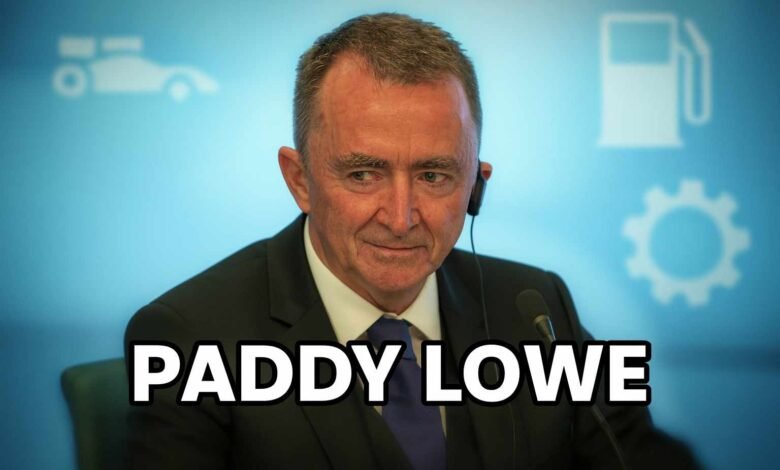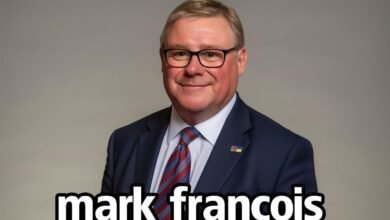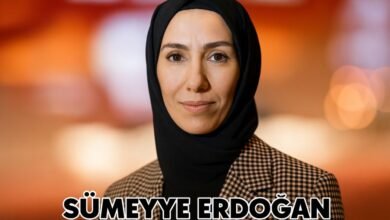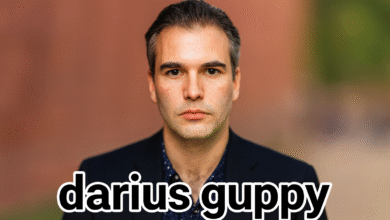Paddy Lowe: Visionary Engineer Who Reimagined Performance and Fuel
How “Paddy Lowe” moved from Formula 1 brilliance to synthetic fuel breakthrough

Introduction
In the fast-paced world of motorsport, few engineers have left as bold a mark as Paddy Lowe. From his early days refining suspension electronics to steering championship teams in Formula 1, Lowe has always pushed the envelope. But his journey did not stop when he left racing—he now leads a movement to reinvent fuel itself with Zero Petroleum, pioneering synthetic, carbon-neutral fuels. In this article, you will discover the complete, verified story of Lowe’s life, career, innovations, and ongoing legacy.
Quick Bio
| Item | Detail |
|---|---|
| Full Name | Patrick Allen Lowe |
| Date of Birth | 8 April 1962 |
| Birthplace | Nairobi, British Kenya |
| Nationality | British |
| Education | Sevenoaks School; University of Cambridge (Engineering) |
| Spouse | Anna Danshina |
| Children | Two (Noah Kelly, Finty Kelly) |
| Prominent Roles | F1 Technical Director / Executive Engineer; Founder & CEO, Zero Petroleum |
| Known For | Engineering innovation, synthetic fuel pioneer |
Early Life and Education
Paddy Lowe was born on 8 April 1962 in Nairobi, then part of British Kenya. He spent a portion of his childhood in East Africa, including Uganda, and grew up tinkering with bicycles, chains, and mechanical parts alongside his brother. These early hands-on experiences fostered an intuitive curiosity for engineering and control systems.
He returned to the UK for formal education, attending Sevenoaks School and later enrolling at Sidney Sussex College, University of Cambridge, where he graduated in 1984 with a degree in Engineering. During his university years, he was sponsored by a company under a “sandwich” scheme, combining academic and practical training.
Career in Formula 1: Engineer, Leader, Innovator
Williams (1987–1993)
Lowe entered Formula 1 in 1987 by joining Williams as Joint Head of Electronics. He focused on electronic control systems, notably active suspension, a radical technology at the time. His contributions helped Williams achieve dominant form in the early 1990s, culminating in the 1992 Drivers’ and Constructors’ championships with Nigel Mansell.
McLaren (1993–2013)
In 1993 Lowe moved to McLaren to head the Research & Development division (later “Vehicle Technology”). He gradually rose through the ranks: by 2001 he was Chief Engineer of Systems Development, then Engineering Director in 2005, and finally Technical Director in 2011. During those years, he oversaw work on innovations such as traction control, simulator development, seamless gear shifts, and vehicle integration. Under his guidance, McLaren secured multiple championships and worked with drivers such as Mika Häkkinen and Lewis Hamilton.
Mercedes (2013–2017)
On 3 June 2013, Lowe joined Mercedes AMG Petronas as Executive Director (Technical). He became a key architect of the team’s dominance in the hybrid V6 turbo era. During his tenure, Mercedes won successive Drivers’ and Constructors’ titles, and secured spectacular performance statistics: race wins, pole positions, dominance in reliability, and record consistency. On 10 January 2017, Lowe was placed on “garden leave,” stepping away from an active role with the team.
Return to Williams (2017–2019)
In March 2017, Lowe rejoined Williams as Chief Technical Officer and took on a role as a shareholder and board member. The return proved challenging: the Williams cars he oversaw (e.g. FW41, FW42) failed to compete, and the team struggled at the back of the grid. In March 2019 he took a leave of absence, and by 25 June 2019 his departure from Williams was confirmed.
Over 32 years in Formula 1, Lowe was involved with cars that won 12 World Championships (7 Drivers’ + 5 Constructors’) and 158 Grand Prix victories. His legacy in F1 includes pushing performance boundaries via electronics, systems integration, simulation, and hybrid controls.
Transition and Business Venture: Zero Petroleum
After stepping away from Formula 1, Lowe co-founded Zero Petroleum Limited in 2020 together with Professor Nilay Shah. The company aims to develop fossil-free, synthetic “drop-in” fuels—petrol, diesel, jet fuels—made purely from carbon dioxide from the air and hydrogen from water, using renewable energy sources. The process is sometimes called petrosynthesis: generating hydrocarbons from basic molecules rather than extracting them from fossil reserves.
In November 2021, Zero’s fuel powered the world’s first flight entirely on synthetic fuel, partnering with the UK Royal Air Force in Project MARTIN. In the years since, Lowe has guided Zero’s ambition to scale production from demonstration plants toward commercial viability. The company has entered a sponsorship and technical partnership with Sauber F1 beginning in 2024, bringing synthetic fuel closer to the racing grid. Zero has also introduced its synthetic fuel into the Australian market at motorsport events.
Zero claims its fuels can be used in existing engines without modification and aims to deliver full performance of conventional fuels while being carbon neutral.
Engineering Values and Approach
Lowe is respected not just for his titles but for a mindset:
-
He approaches engineering problems holistically, integrating control systems, software, hardware, aerodynamics, and data.
-
He emphasizes marginal gains—small improvements across subsystems that cumulatively produce large gains in performance.
-
He believes in the synergy of motorsport and technological advancement: using F1 as a proving ground for innovations that can later serve broader industries.
-
His move into synthetic fuels reflects a conviction that internal combustion engines can still have a sustainable future, rather than being immediately discarded in favor of electrification alone.
Positive & Negative Aspects
-
Positive: Lowe’s career demonstrates visionary thinking, technical depth, and adaptability: from top levels of Formula 1 to founding a clean-fuel startup.
-
Negative: His return to Williams exposed risks in management and execution—talent and resources alone could not overcome structural challenges at the team.
Legacy and Impact
Paddy Lowe’s legacy is two-fold. In motorsport, his innovations contributed materially to championship successes, raised standards of engineering sophistication, and influenced how F1 teams integrate electronics, simulation, and systems thinking. In energy and sustainability, he is one of the leading voices trying to prove that synthetic fuels can be a practical, scalable bridge toward a cleaner future—especially in sectors where electrification is difficult.
If Zero achieves commercial scale, Lowe’s name may be remembered not only as a motorsport engineer but as a pioneer in the energy transition.
Conclusion
From Nairobi to the pinnacle of Formula 1, and from there to the frontier of synthetic fuel technology, Paddy Lowe exemplifies what it means to think without boundaries. His engineering talent, leadership, and ambition have driven not only race wins and championships but also a bold bet on sustainable fuel. His journey underscores how mastery in one domain can fuel innovation in another. For those following the intersection of motorsport, engineering, and clean energy—Lowe’s story offers compelling vision and insight.
Frequently Asked Questions (FAQ)
Q1: What kind of fuel is Zero Petroleum developing?
Zero develops synthetic, fossil-free drop-in fuels made from CO₂ and water using renewable energy. These fuels aim to replicate performance of petrol, diesel, and jet fuel without engine modifications.
Q2: When did Paddy Lowe leave Formula 1?
He left Williams permanently in June 2019, marking his formal exit from direct roles in F1.
Q3: How many championships was Lowe involved with in F1?
He was involved with 12 World Championships (7 Drivers’ + 5 Constructors’) and 158 Grand Prix wins over his F1 career.
Q4: Which teams did Paddy Lowe work for in Formula 1?
He worked for Williams, McLaren, and Mercedes, including roles such as Technical Director, Executive Director, and Chief Technical Officer.
Q5: What is his educational background?
He studied Engineering at Cambridge University (Sidney Sussex College) after attending Sevenoaks School in the UK.



